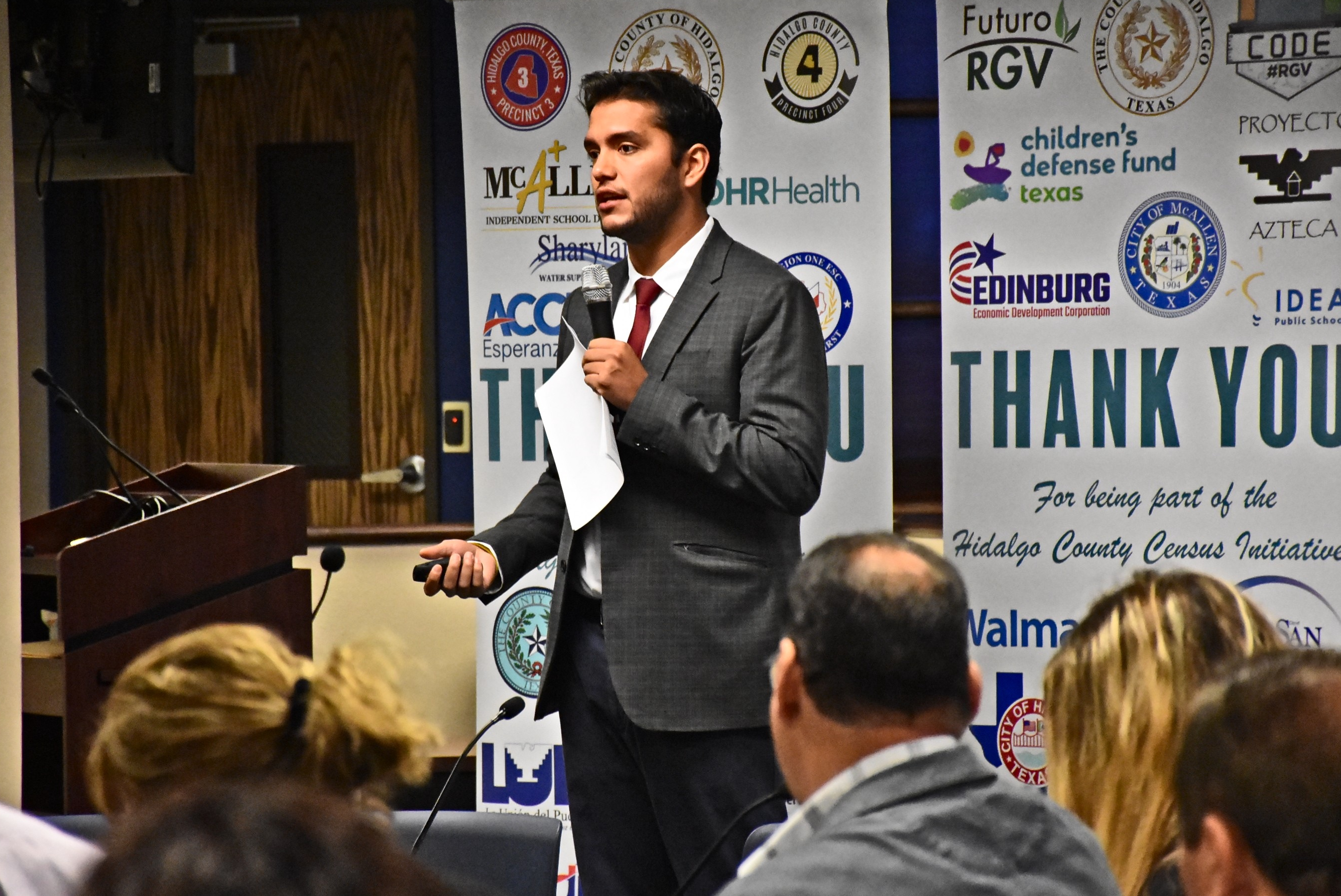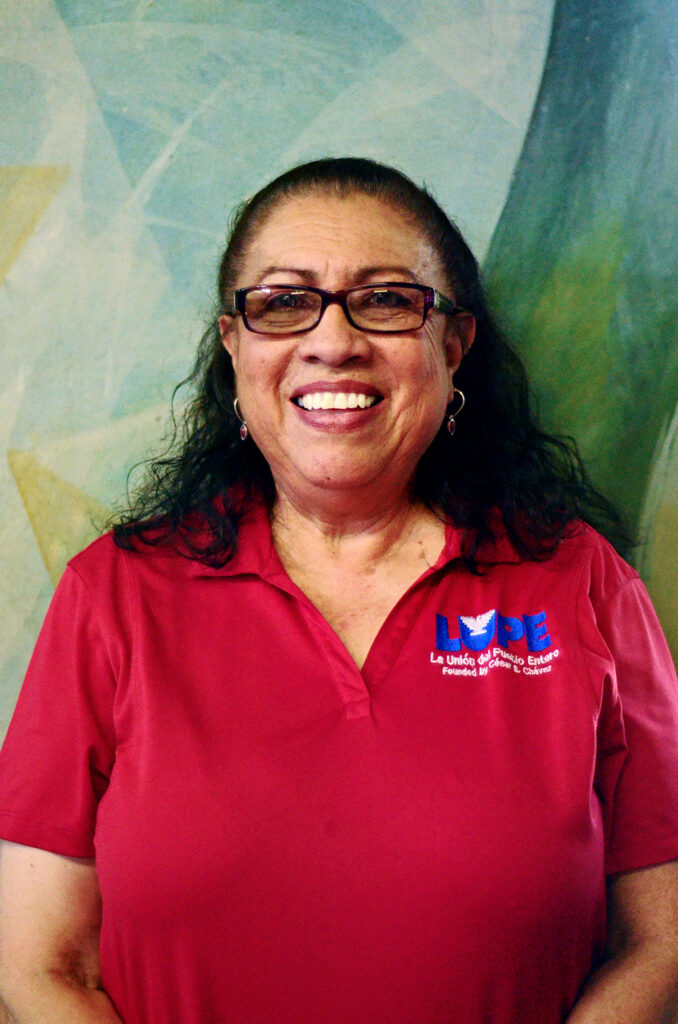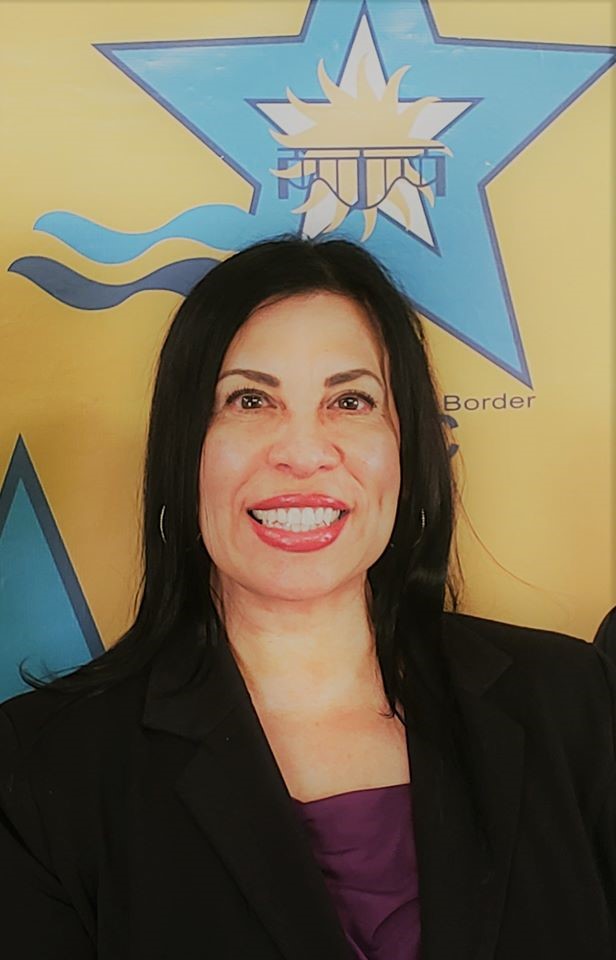The restrictions to normalcy that the silent Coronavirus enemy has brought to Americans´ lives left promoters and organizers of the 10-year Census without one of its most vital tools: face-to-face meetings.
In normal times, enumerators would have had six months and not just two (the new deadline for completing the survey is September 30) to go door-to-door to the households that had not filled it out voluntarily. And the promoters would have been able to promote it after a religious service, at bazaars, concerts or supermarkets, key places where the Latino population congregates.
Even with all these limitations, activists in south Texas, where 25% of the state’s population lives, but more than 60% of the households do not have access to the Internet, have taken on the marathon task of launching this tool that would guarantee communities the funds for a total of 16 Federal programs over the next ten years.
From Medicaid to CHIP, including educational grants, child care programs and housing, the Census also determines the number of seats in Congress and the electoral votes, as well as resources for highways, schools and hospitals. Even amid a pandemic like the current one, work assistance programs, services for the disabled and Federal government stimulus checks get to people based on data from the Census.
Texas receives a little more than $400 billion in federal funds per year, thanks to the numbers obtained in the 2010 census, according to a study by the George Washington Institute of Public Policy. But an undercount of just 1% would mean the state would lose $300 million per year over the next decade.
Data from the Texas Demographic Center in Houston, show that, since 2010, Hispanics have accounted for 53% of the total population growth.
Despite this strong presence, the undercount in these communities is rampant and the promoters are doubling efforts so that more people will fill out the forms with just two weeks before the deadline. According to Federal figures, up until September 14, 61.5% of Texas households completed the self-response Census on-line, slightly under the national average of 65.9%.
Here are three profiles of the Census heroes, who despite the pandemic and thanks to their deep connection and work with the Hispanic community, keep on encouraging families to respond to the 2020 Census survey so they may have access to a better quality of life over the next decade.
I count! That is what players of the Census Lotto replaced their Mexican bingo victory shout with in the neighborhoods and community centers across the Rio Grande Valley. Since taking on the task, in September 2019, of promoting the Census in one of the poorest and most undercounted border areas in the country, where a little more than 90% of the Latino population lives, the LUPE (La Unión del Pueblo Entero) activists arrived there with colored cards and educational descriptions.
“Instead of the lottery images, all the Census Lotto cards taught about the Census, what it means for our areas every 10 years and the importance of counting 100% of us,” said Juanita Valdez-Cox, executive director of LUPE, from her home in Donna, Texas just eight miles from the Mexican border. This 72-year-old woman, who has fought tirelessly for Latino rights for 40 years, worked side-by-side with emblematic leaders Cesar Chavez and Dolores Huerta at the United Farm Workers union (UFW).
“We created the Census Lotto and offered it to various community organizations. They would play it at home within families, under a tree, in a park until the third week of March, when we got the coronavirus issue, and we said, and now what do we do?
Since then Juanita and an army of LUPE volunteers, an organization that works in four counties on the Mexican border (Cameron, Hidalgo, Starr and Wellesley), where 2,000 immigrant families live, have created everything possible to promote the 10-year Census.
In response to social distancing, they started caravans with loudspeakers and big plastic signboards on their cars to go through the neighborhoods promoting self-response to the survey. They took hotspots to the rural areas, where community leaders trained by LUPE help families respond on the tablets that some schools provided to the children.
They have held children’s drawing contests to award children who showed their family being counted; and the schools that counted the largest number of families in their group received $1,000 scholarships.
While people go to pick up bags of food at the churches and food banks, they take advantage to leave Census pamphlets handy both in English as well as Spanish. An immigration lawyer answers questions via Zoom weekly, and that message is also shared.
“We’re a high Coronavirus infection area and for many undocumented people who cannot access Federal aid, it was vital to raise funds for them,” said Juanita. “They say that farmworkers are essential, but there were no face masks or gloves for them…When we gave them pre-paid cards for paying the rent or electricity, in return we asked of them to bring us a list of ten people they counted for the census,” noted Juanita.
Fieldwork has not been easy. These counties have the highest number of unincorporated communities, that is, those that occupy land where there is no local town government. Many of these neighborhoods lack a public street lighting system, its own sewage system infrastructure and access to Internet.
The houses started to be numbered just a few years ago, that means that before that, in emergencies there was no way to give an address for the fire fighters or police to find them, for example. Juanita, who was born with a midwife in Mercedes and who had a hard time straightening her own immigration status, was raised in one of these communities called Colonia Seca. She remembers that “we even had to steal water. We didn’t have parks or streets, and we’d get sprayed with pesticides.” Today, she says, the minimal progress in the quality of life in these territories has been thanks to the farmworker struggle.
“Now, we’ve been strongly promoting the campaign to get an Internet connection. Hidalgo County has approved $18 million for all the neighborhoods, and the schools will be the allies. The children, these days, sit outside a McDonalds or a Burger King to get a signal for their homework. Now we’re going to keep watch so that money doesn’t get squandered.”
In spite of the connectivity limitations, the LUPE organizers are still using Facebook, Whatsapp and Messenger to broadcast their educational campaigns through the community leaders, who have been tasked with counting at least ten family groups in their neighborhoods.
Because of immigration from Mexico and Central America, many families here are mixed. That means their members can be citizens, residents or undocumented, and this complexity has led them to decide not to participate in the Census for fear of affecting one of their own. “Since 2016, the government has been posing challenges, blocking our people from being counted…they had already tried with the citizenship question that they wanted to include and that LUPE brought a suit over and testified in the Maryland Federal court and we won… but for many areas it was already too late. The damage had been done.”
The residents of Starr County decided they did not want to be counted. The self-response rate there stayed at a pale 37% because the people think that their information, specifically their immigration status, will be shared with the government, which puts them at risk of deportation. And in towns like Laguna Vista in Cameron County, the percentage has not passed 30% because access is very limited.
“We are still making thousands of phone calls to the most complicated areas and we monitor with a list to insist as many times as possible,” Juanita underscored referring to the telephone marathons that a team of 43 people keep going. They have also recorded television commercials next to the Bishop, a diocesan nun and other known community figures, in which they speak about not only the Census, but also the November elections. “There isn’t a thing that we haven’t tried, and we’re going to keep at it until the last minute,” she concluded.
Every Friday students from different Hidalgo County school districts changed their spirit of competition sport rivalry for a more attainable challenge in times of COVID-19: beat the big cities, this time collecting the most Census responses.
Called “Friday Night Lights”, this 13-week campaign launched by the office of the Hidalgo County judge, set athletes about to spend their efforts completing questionnaires until achieving qualifying rounds in which the Hidalgo school district beat the Pharr-San Juan-Alamo school district.
“This helped us to get to small communities that are not part of a city, but of a district,” said Nestor López, this office’s economic development analyst and one of the Census promoters. “The response was very positive because there was no school at this time and the students accepted enthusiastically.”
López, only 27 years old, leads a team of seven people. His Census campaign started as he well says “earlier than almost anywhere else in the United States,” at the end of 2017. At that time they got leaders of different sectors together, educational, governmental, non-governmental, and even the media, that shared the idea that “the Census, done well, allows us to provide services to an exact number of people… nowadays the money and Federal and State aid are calculated for a very low number (of population) versus what it really is.”
Even though Hidalgo County is similar in size to Harris County, where the very populated city of Houston is, here almost one-fourth of the population, that is almost 250,000 people, lives outside the jurisdiction of a city. According to Census data, 92.5% is of Hispanic origin. The problems with the count lie in the vast geography of 22 jurisdictions and the possibility that the Federal enumerators can knock on doors in cities like McAllen, for example, but not in areas like Perezville.
These districts have no access to any type of Internet, and the scene is complicated by the language barriers and the actual lack of awareness about technology. The plans to go to churches, parks, bookstores, libraries, even to help them to connect, were replaced by the presence of civil employees with face masks and gloves taking hotspots to school events, where families go for supplies and food.
“It’s not ideal because we can’t be in front of someone helping them, due to the distance regulations, but taking them Internet has shown good results… now the Federal workers can knock on doors minding regulations that are different from ours.
The messages sent from the White House have been heard here, eroding the confidence of those without legal status, even though they know that the citizenship question is not included in the questionnaire. “Many people prefer not to participate, because up to 12 people may live in their homes, and if one undocumented uncle lives there, they won’t want to open the door so as to not run the risk,” asserted Nestor.
His office is doubling efforts to counteract the message with presentations for parents and students, videos, graphics and radio messages in English and Spanish. Voices of shepherds and even celebrities are part of these materials. “When we tell a parent that if we don’t count their 3- or 4-year-old child now, and the next opportunity isn’t until he or she will be in middle school or high school, and in the meantime they’ll be losing out on resources for their education, that has a positive effect,” maintained Nestor.
The other huge challenge these activists face is the mobility of the border population. Many people live in Mexico, but work in the United States or live on this side of the border and cross over to Mexico to visit family or for business. The so-called “Winter Texans” are residents that spend the winter season in these southern districts that are warmer, sometimes for up to six months. And then the itinerant student population that comes up to three times a year to live in university dorms – a practice that has been altered by the COVID-19 – undoubtedly takes up state resources.
“Each case is different, but people should be counted where they live most of the time, even if it’s only five months of the year. There are people who divide their time in even three places,” Nestor explained. “If someone has a house here, they will surely need government resources.”
Possibly the greatest challenge his office faces is that the reality of the pandemic, which has devastated these communities with a high number of infections and deaths, has made people move the Census down as a priority due to concern over the virus. But for Nestor, what must be reinforced is its intimate relation. “If we don’t get counted we won’t receive the resources for emergencies like the COVID-19. How are hospital systems going to get the money to recuperate after this? A few weeks ago we got hit by hurricane Hanna. Without exact numbers, the government won’t know how to distribute emergency elements,” he concluded.
A caravan of cars decorated with Census materials parades through different neighborhoods in Webb, Dimmit, La Salle, and Duval counties in south Texas. An office of Census count promoters serves people in Laredo every Saturday, helping whoever needs help filling out the questionnaire without getting out of their car, drive-thru style, following the rules for social distancing due to the Coronavirus.
Virtual Zoom meetings take place each Friday with leaders from 35 counties in south Texas. Volunteers participate in phone banks. Neighbors take on the Census challenge, in which each person counted commits to counting ten families in their community. All these strategies for promoting the 10-year count in these border areas take up Julie Bazan’s agenda. Ms. Bazan is the Executive Director for the Area Health Education Center of the Mid Rio Grande Border Region (AHEC), headquartered in Laredo since 2010.
With her are a team of four staff workers and about 100 young bilingual volunteers, high school and university students, who have become “the voice of our community with our family, friends and schoolmates,” asserted Julie.
“If one day you can sit down with a young adult to talk about something useful, that person will share it with thousands of their direct and indirect contacts…their self-esteem is transformed because they feel more prepared to answer any question. Today they feel they have the authority to speak about the Census.”
Another four programs similar to that of AHEC has allowed them to reach 35 counties with special help from the promoters, which are valuable links to the neighborhoods, that is, the unincorporated communities. In these areas, where 92% of the population is Latino, only between 56% and 68% of the inhabitants in certain districts were counted in the 2010 Census. Julie says that if everyone took on the challenge, achieving a count of 80% would be possible.
Along the way, they have had to deny myths about this exercise: Hispanic families believe that an enumerator that knocks on the door is going to ask for the deed to the house, or tax receipts, or will even sell life insurance. There is also a lot of skepticism about the true service the Census provides. “There are people who think it is garbage, and that their communities won’t receive more than the leftovers from the Federal government.”
But what Julie reiterates is that these funds are not only for people with low income “but rather they provide us with services that we all use, like streets, highways parks, and places we where we go to receive medical services…Here (in Laredo) there are only two hospitals, if we had adequate funding there would be more places to receive these services.”
Julie, with more than 25 years of experience in managing non-profit organizations, is constantly sharing her personal telephone number so people can call her with any question. The frequent fears for their immigration status and possible encounters with Federal government officials are part of their conversations, in which she reminds them that the Census answers “are more protected than any financial institution money.”
“Congress approved a law saying that any person who discloses information could receive a fine of up to $250,000. The information isn’t shared with anybody. It is for telling Congress what resources we need.”
The lack of Internet connection also prevails in these communities, even though there is a more equal access to the social networks, like Facebook. That is why the AHEC campaign has been the most intense in this social network, including messages on church pages and posting video selfies of college students promoting the importance of the Census count.
“We have to keep on counting ourselves. This is not over yet, but when it is over, we won’t have another chance to change the numbers for another ten years, and that is a long time,” she concluded.






